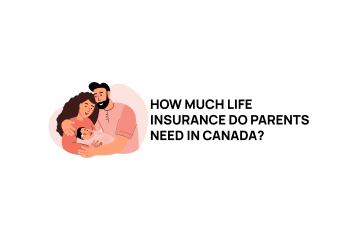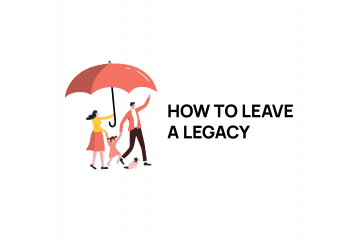In May 2011, we undertook to answer the question “what’s cheaper, term insurance or permanent insurance?”, i.e. to compare costs of term vs whole life insurance. It’s difficult to shake most people’s preconceived belief on this topic one way or the other, so we decided to actually run the numbers.
In order to compare the ‘cheapest’ options, rather than using whole life insurance for Canada, we’ve used Term to 100. Term to 100 insurance, like whole life, has level premiums for life. It does not have cash values however, ensuring that this product has lower premiums. (Note: to take into account cash values on whole life insurance, see our Buy Term Invest the Difference study). For our U.S. study, we used Universal Life with Guaranteed Level insurance costs to age 121 as the least expensive option for level insurance premiums for life.
Assumptions:
- The premium comparison involves comparing the total cost of premiums over various periods of time. To do this, we simply did a present value calculation assuming 3%.
- For the term insurance premiums, we assumed that at renewal (at the end of the term) that the owner would cancel the existing insurance and be accepted for a new policy at the older ages. i.e. for the 10 year term that the owner would qualify for and purchase a new 10 year term policy every 10 years. This is certainly not guaranteed – there’s no assurance that one can continue to qualify for life insurance as we get older. However in comparing term vs permanent this is what most people would be assuming they would be doing in the future.
- For the term insurance policies that are assumed purchased at renewal, we have assumed that current premiums would still be available in the future. So when a 20 year old with a 10 year term purchases a new 10 year term policy at age 30, we have assumed the rates that a 30 year old would receive today. Term insurance premiums could rise in the future, however we see no current trend towards that. In addition, rates on term life insurance have not changed dramatically in the last couple of decades.
- We have used $500,000 of face amount of life insurance and assumed a health class of ‘regular’.
- For the premiums, we have used the database of life insurance rates from Compulife Software Inc. (Compulife®: is a registered trademark of Compulife Software Inc., we’ve reused their numbers with permission – thanks!). For each case we simply ran the quotes through their database and selected the least expensive company for that quote.
Conclusion:
The following tables shows the total present value cost of the various insurance products. The lower the present value cost, the ‘cheaper’ the product is assumed to be over that timespan.
It appears that in all cases, the present value (i.e. total cost over time) of 10 year term is cheaper than either 20 year term or permanent life insurance. But that is a very dangerous conclusion to draw given our assumptions.
In order to qualify for those ‘cheaper’ premiums, the following should be noted:
– you would need to qualify and pass a new medical exam every 10 years for the 10 year term premiums shown. For the permanent insurance premiums, once the policy is issued the premiums remain unchanged no matter how old we get or how our health declines. Are you prepared to risk your ability to have life insurance if your health declines?
– you’ll notice that permanent insurance starts to close in on the least expensive option over time. We would expect that the total cost of permanent insurance would actually start to be as inexpensive as 10 year term sometime in our late 70’s or 80’s. In other words, eventually, 10 year term would not be the least expensive option. Thus if you are considering life insurance that you need forever, then inexpensive permanent insurance may actually be the least expensive option overall.
– our numbers stop in all cases at age 80. This is for two reasons; first we typically can’t buy term insurance past that point. Secondly, most term policies cease renewing at around that age, i.e. even if you keep your existing term policy, eventually the coverage will simply expire. Again, this speaks to the fact that if you want insurance forever, you should select permanent insurance.
So the correct conclusion to draw is that term insurance is the least expensive option over the short term and permanent insurance will be the better option in the much longer term.
The next question we ask is, if we want permanent life insurance (i.e. insurance forever) is it cheaper to lock in a permanent life insurance policy now, or buy a less expensive term policy to save premiums initially then change to a permanent policy later? See our white paper on ‘how early to convert”.

| Initial Age 20, Canada | ||||||
| Male | Female | |||||
| Timframe | Term 10 | Term 20 | Permanent | Term 10 | Term 20 | Permanent |
| 10 years | 2504.04 | 3426.58 | 10016.16 | 1493.64 | 2328.32 | 7204.61 |
| 20 years | 4367.28 | 5976.28 | 17469.13 | 2735.80 | 4060.81 | 12565.52 |
| 30 years | 6167.21 | 9186.95 | 23014.84 | 4000.61 | 6274.23 | 16554.53 |
| 40 years | 9262.10 | 11576.00 | 27141.37 | 6118.17 | 7921.22 | 19522.74 |
| 50 years | 15605.16 | 25056.67 | 30211.89 | 10804.76 | 17105.85 | 21731.36 |
| 60 years | 31037.29 | 35087.56 | 32496.65 | 21426.88 | 23940.08 | 23374.78 |
| Initial Age 30, Canada | ||||||
| Male | Female | |||||
| Timframe | Term 10 | Term 20 | Permanent | Term 10 | Term 20 | Permanent |
| 10 years | 2504.04 | 3734.10 | 13706.33 | 1669.36 | 2460.11 | 11465.84 |
| 20 years | 4922.99 | 6512.61 | 23905.13 | 3369.16 | 4290.66 | 19997.56 |
| 30 years | 9087.27 | 15123.05 | 31493.99 | 6214.98 | 9763.40 | 26345.93 |
| 40 years | 17606.80 | 21530.03 | 37140.82 | 12513.37 | 13835.63 | 31069.72 |
| Initial Age 40, Canada | ||||||
| Male | Female | |||||
| Timframe | Term 10 | Term 20 | Permanent | Term 10 | Term 20 | Permanent |
| 10 years | 3250.86 | 5798.83 | 23371.05 | 2284.39 | 3997.68 | 19065.86 |
| 20 years | 8840.59 | 10113.71 | 40761.31 | 6108.94 | 6972.33 | 33252.64 |
| 30 years | 20296.85 | 34461.31 | 53701.29 | 14573.44 | 23560.80 | 43808.95 |
| 40 years | 48169.01 | 52578.21 | 63329.85 | 33758.17 | 35904.19 | 51663.82 |
| Initial Age 50, Canada | ||||||
| Male | Female | |||||
| Timframe | Term 10 | Term 20 | Permanent | Term 10 | Term 20 | Permanent |
| 10 years | 7512.12 | 15551.41 | 46742.10 | 5139.87 | 9884.37 | 36638.07 |
| 20 years | 22908.38 | 27123.12 | 81522.61 | 16515.45 | 17239.27 | 63900.24 |
| Initial Age 20, US | ||||||
| Male | Female | |||||
| Timframe | Term 10 | Term 20 | Permanent | Term 10 | Term 20 | Permanent |
| 10 years | 2635.83 | 3426.58 | 12485.76 | 1757.22 | 2152.60 | 10345.99 |
| 20 years | 4662.52 | 5976.28 | 21776.34 | 3260.89 | 3754.33 | 18044.39 |
| 30 years | 6730.00 | 9551.80 | 28689.41 | 5036.49 | 6746.09 | 23772.71 |
| 40 years | 10223.06 | 12212.33 | 33833.38 | 7461.73 | 8972.25 | 28035.13 |
| 50 years | 16539.19 | 24454.02 | 37660.97 | 11771.24 | 17079.51 | 31206.76 |
| 60 years | 29696.59 | 33562.99 | 40509.07 | 18876.03 | 23112.07 | 33566.75 |
| Initial Age 30, US | ||||||
| Male | Female | |||||
| Timframe | Term 10 | Term 20 | Permanent | Term 10 | Term 20 | Permanent |
| 10 years | 2723.69 | 3909.82 | 16737.54 | 2020.81 | 3031.21 | 14290.61 |
| 20 years | 5502.21 | 6819.09 | 29191.84 | 4407.06 | 5286.71 | 24924.16 |
| 30 years | 10196.6 | 15278.73 | 38459.01 | 7666.38 | 11732.38 | 32836.52 |
| 40 years | 18684.94 | 21573.49 | 45354.65 | 13458.00 | 16528.56 | 38724.06 |
| Initial Age 40, US | ||||||
| Male | Female | |||||
| Timframe | Term 10 | Term 20 | Permanent | Term 10 | Term 20 | Permanent |
| 10 years | 3734.10 | 6457.79 | 28036.47 | 3206.93 | 5403.46 | 23845.50 |
| 20 years | 10042.94 | 11262.99 | 48898.24 | 7587.18 | 9424.14 | 41588.79 |
| 30 years | 21450.58 | 33372.85 | 64421.36 | 15370.63 | 24066.75 | 54791.47 |
| 40 years | 45214.31 | 49824.66 | 34962.23 | 28202.68 | 34962.23 | 64615.50 |
| Initial Age 50, US | ||||||
| Male | Female | |||||
| Timframe | Term 10 | Term 20 | Permanent | Term 10 | Term 20 | Permanent |
| 10 years | 8478.60 | 15279.04 | 43174.94 | 5886.69 | 11641.59 | 36146.05 |
| 20 years | 23809.48 | 26648.09 | 75301.15 | 16347.00 | 20304.03 | 63042.11 |




